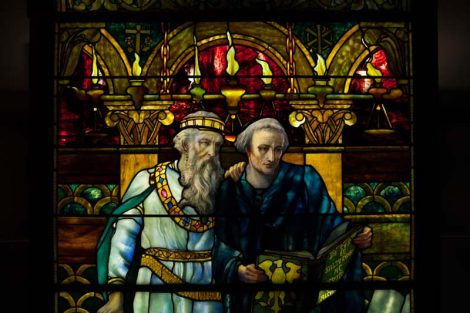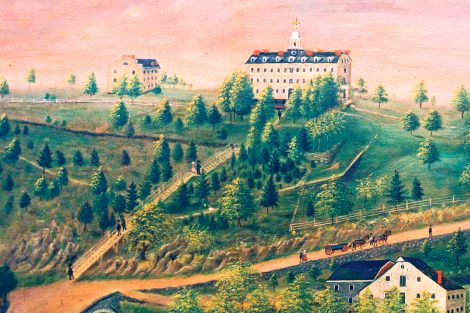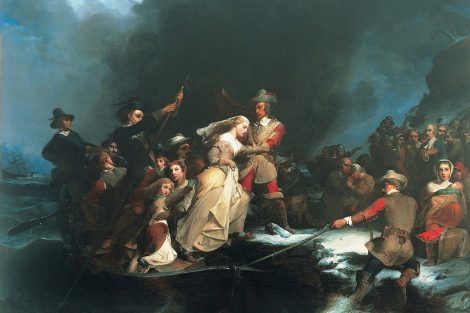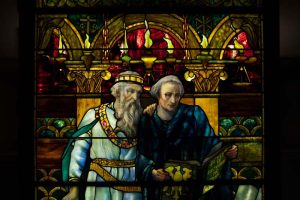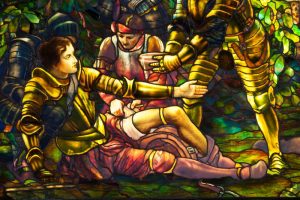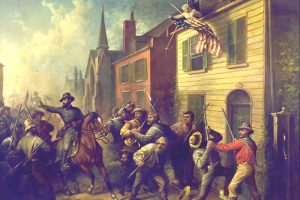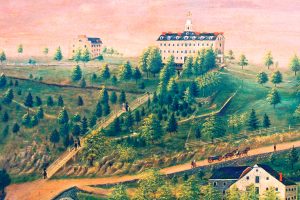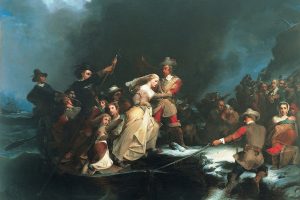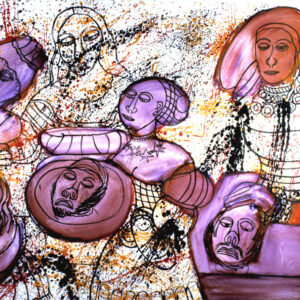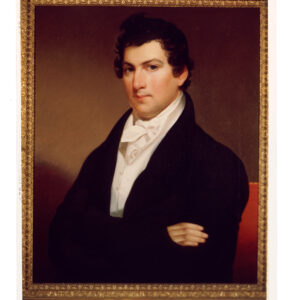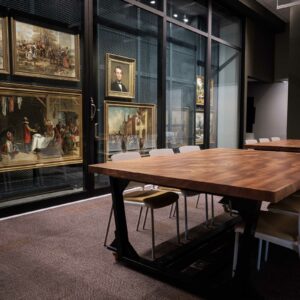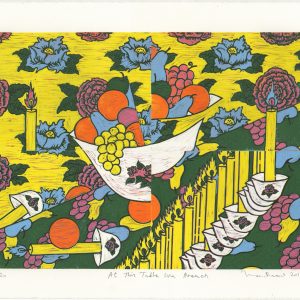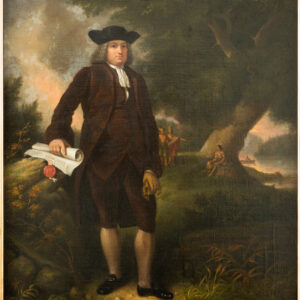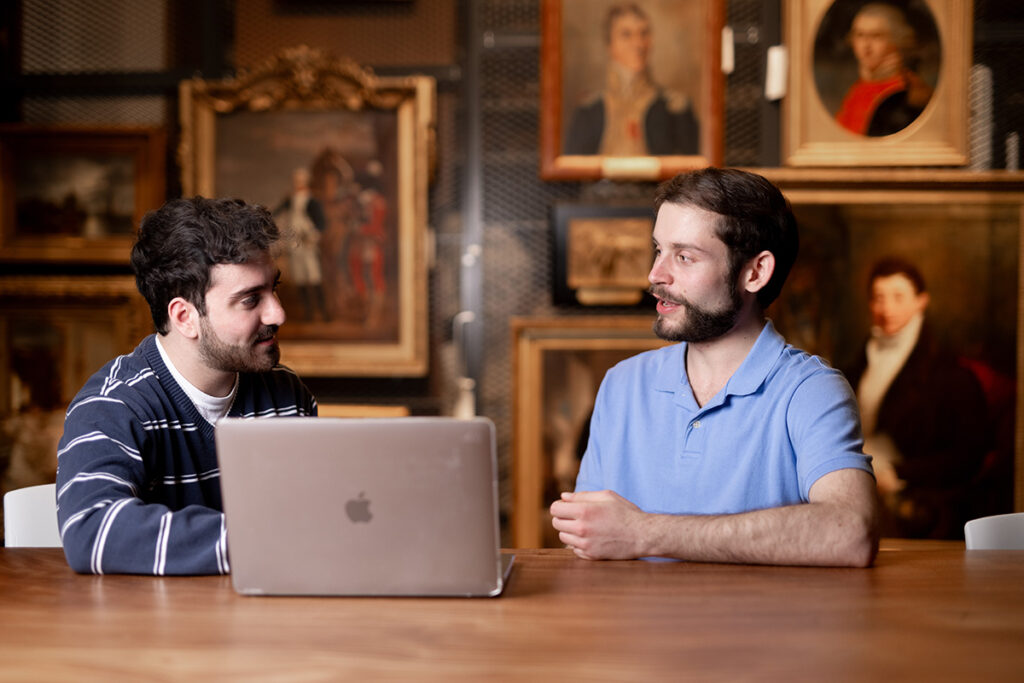Lafayette College Art Collection
The Lafayette College Art Collection provides researchers access to breadth of visual materials focused on the life of Marquis de Lafayette, the city of Easton, and the College's alumni, faculty, and leaders.
The study of original objects develop skills in close observation, visual and critical analysis, questioning assumptions, evidence-based reasoning, working collaboratively in diverse teams, creative response, and research using primary sources.
Please contact us one week before at artgallery@lafayette.edu if you are interested in conducting research in the Kirby Art Study Center.
The collection includes 18th through early 21st century American and European paintings, prints, and sculpture; vintage and contemporary photography; and Native American pottery and baskets. Recent acquisitions build on the strength of the existing collections, and teaching areas of faculty.
Highlights of the collection include:
- Kirby Collection of Historical Paintings, assembled by Allan P Kirby, class of 1915, consists of nineteenth and 20th century American portraits, history paintings, and sculpture. Assembled by Allan P. Kirby in the 1940s and 50s, “It was intended to have broadly represented the many fields of achievement through which men can leave lasting impressions upon the nation.” Recent additions include a portrait of Supreme Court Justice Thurgood Marshall; a portrait of Ruth Bader Ginsberg–recently commissioned–will be added to the portraits in Kirby Hall of Civil Rights.
- A selection of the portraits can been seen in Kirby Hall of Civil Rights, built in 1929–30, given by Fred Morgan Kirby, to house the Department of Government and Law. Of special note are portraits of Thomas Jefferson at the Natural Bridge, George Washington, Abraham Lincoln, John Marshall, Ruth Bader Ginsburg, and Thurgood Marshall. The Kirby Collection’s history paintings include Barbara Frietchie by Dennis Malone Carter and The Landing of the Pilgrims at Plymouth Rock by Peter Frederick Rothermel. Other portraits and history paintings can now be viewed in the new the Kirby Art Study Center, at the Williams Center for the Arts.
- Innovative, limited edition prints produced at Lafayette’s Experimental Printmaking Institute (EPI) by renowned national and international artists with a strong representation of works by women and artists of color.
- British and European paintings were acquired for the 1930s-era Chateau Chavaniac, built as a private retreat by Allan P. Kirby and named after the birthplace of the Marquis de Lafayette. The F. M. Kirby Foundation gave the Chateau, located north of the campus in Easton, with its collection of decorative arts and paintings, to the College in 1984.
- There are, of course, many representations of the Marquis de Lafayette in the collection, including a full-size outdoor bronze sculpture of Lafayette by Daniel Chester French, cast from a full size plaster model given to the College by French. Another gift from French is a small bronze cast of the maquette—a small study—for his bas relief sculpture of Lafayette at Prospect Park, Brooklyn, New York, the same plaster model of Lafayette was used for both sculptures.
- Vintage and contemporary photographs, including recent gifts (2015-2025) from Bennett J. ’79 and Meg Goodman.* of more than 3,000 photographs with a focus on the Civil Rights Era. International artist, Ellen Carey, donated a 20×24 Polaroid pull in 2022. 2019 saw the gift of photographs by Larry Fink, his “Fish and Wine” series; “Sense of Sound” the 2008-09 commission to document the Orpheus Chamber Orchestra at Lafayette and Carnegie Hall, and “Night at the Museum,” which documented the 2014 kick-off capital campaign event held at the American Museum of Natural History; in 2020 photographs from Fink’s iconic “Social Graces,” were given to the art collection.
- Two superb Tiffany Glass & Decorating Company figurative stained glass windows (1898 and 1899) depicting Alcuin and Charlemagne and The Death of Sir Philip Sidney at the Battle of Zutphen. The windows were originally installed in Pardee Hall (Alcuin and Charlemagne) and Van Wickle Hall (Sir Philip Sidney). The windows are now located in Skillman Library.
